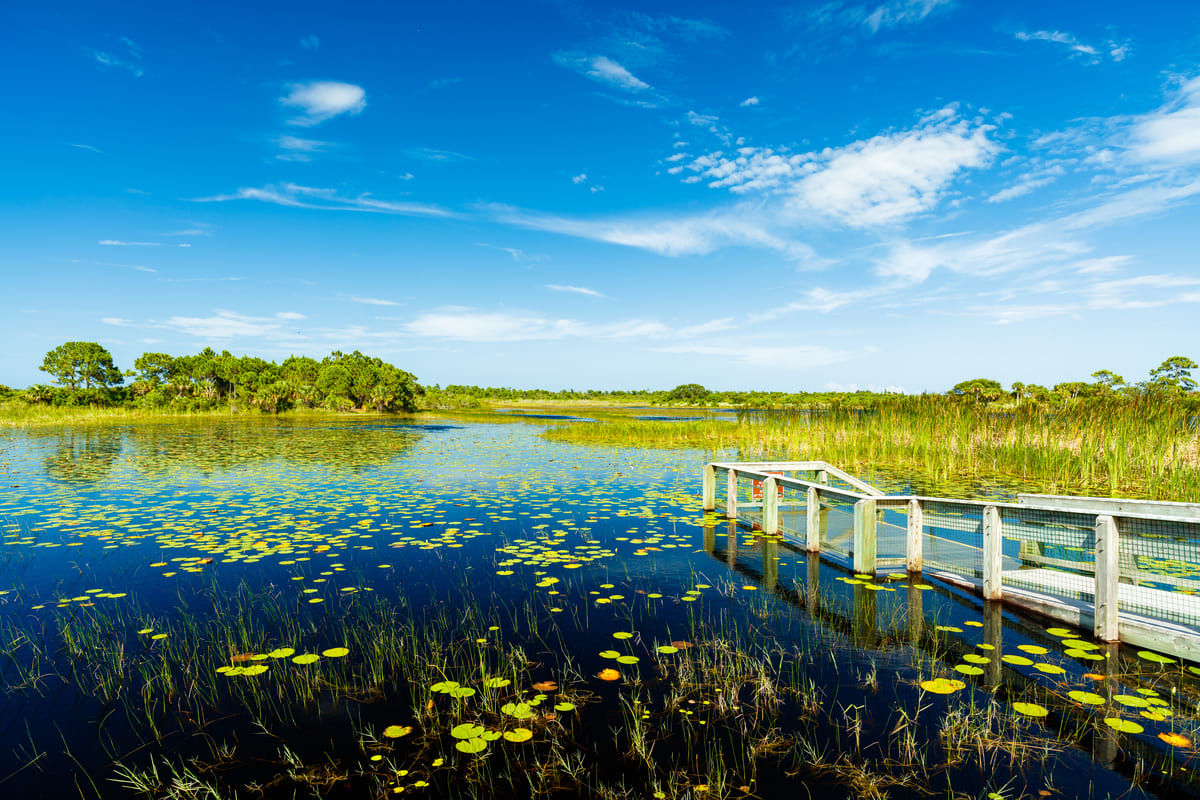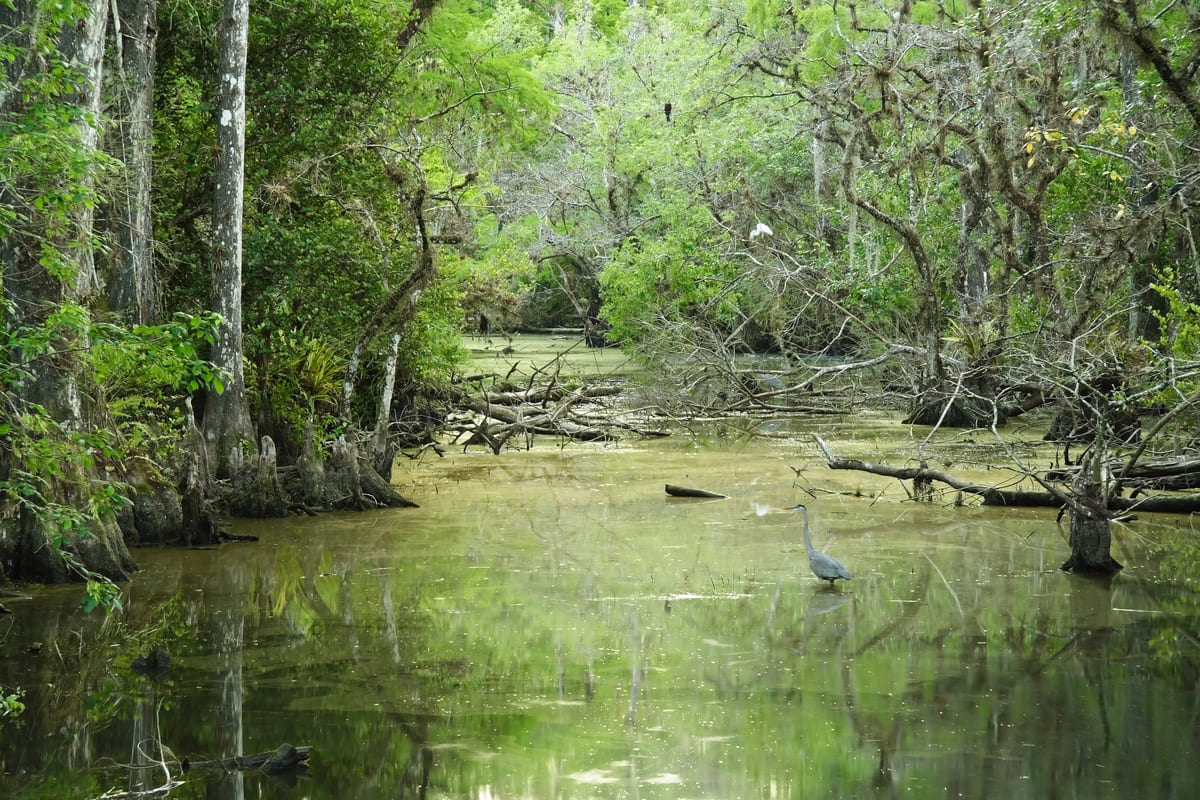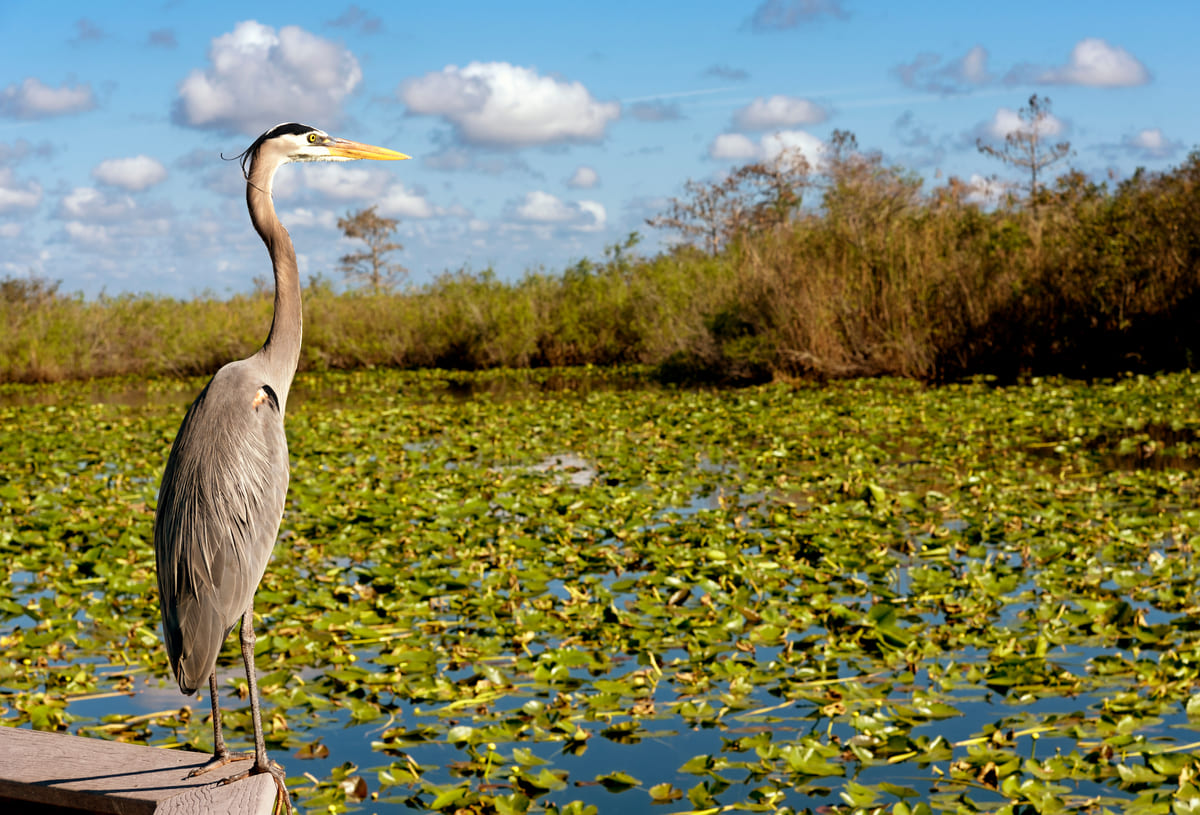The Everglades is one of America’s most unique natural treasures—a sprawling wetland full of mystery, rich history, and ongoing conservation challenges. In this guide, we’ll explore the evolution of this ecosystem, its cultural and environmental significance, and the efforts underway to preserve its legacy for future generations. Whether you’re a history buff, an environmental advocate, or a curious traveler planning your next adventure, this comprehensive article provides a deep dive into the Everglades’ past and present.
Table of Contents
- A Brief Introduction
- History of the Everglades
- Geological Origins
- Indigenous Peoples and Early Inhabitants
- Exploration and Settlement
- Modern History and Cultural Shifts
- Conservation Efforts in the Everglades
- Major Conservation Milestones
- Key Organizations and Their Roles
- Current Challenges and Initiatives
- Experiencing the Everglades: Tours and Activities
- Visitor Best Practices
- Frequently Asked Questions
A Brief Introduction
The Everglades, located in southern Florida, is often described as a “River of Grass” due to its slow-moving waters and unique vegetation. Spanning over 1.5 million acres, this wetland ecosystem plays a crucial role in maintaining biodiversity, supporting a variety of wildlife, and even protecting against flooding and storms. As we peel back the layers of time, you’ll discover how the natural processes, human interactions, and modern conservation initiatives have shaped the Everglades into what it is today.
Key points to keep in mind:
- Ecosystem Uniqueness: Its slow flow and expansive marshlands are rare in the world.
- Cultural Heritage: The Everglades has been home to indigenous communities for centuries.
- Environmental Importance: It is crucial for flood control, water filtration, and habitat preservation.
History of the Everglades
Understanding the Everglades requires an exploration of both its natural evolution and its historical context. This section covers its geological formation, the indigenous peoples who lived there, the arrival of European explorers, and the cultural changes through the decades.
Geological Origins
The formation of the Everglades is a story written over millennia:
- Ancient Seas and Wetlands: Over 2,000 years ago, the land that is now the Everglades was formed as sea levels changed, creating a slow-moving river system.
- Unique Topography: The shallow waters and expansive sawgrass prairies resulted from sediment deposits and natural water flow patterns.
These processes set the stage for an ecosystem that supports a wide range of flora and fauna. The National Park Service offers detailed insights into the geological processes behind the Everglades’ formation. For more on this topic, check out their Everglades overview (source: ).
Indigenous Peoples and Early Inhabitants
Long before European explorers arrived, indigenous peoples made the Everglades their home. Their deep connection to the land is evident in the cultural artifacts and traditions that have been passed down through generations:
- Native Tribes: Groups such as the Calusa and Miccosukee thrived here, utilizing the rich natural resources for food, shelter, and spiritual practices.
- Cultural Impact: The indigenous peoples developed techniques to live sustainably, balancing their needs with the environment.
These early communities left behind a legacy that underscores the importance of traditional ecological knowledge, a perspective increasingly appreciated in modern conservation efforts.
Exploration and Settlement
The arrival of European explorers in the 16th century marked a turning point:
- Early Encounters: Explorers were both awed and intimidated by the vast, untamed wetlands.
- Colonial Interests: With the promise of new resources, colonial powers began to establish settlements, often disregarding the delicate balance of the ecosystem.
- Environmental Alterations: As agriculture and urban development expanded, significant portions of the Everglades were drained and altered, setting the stage for future environmental challenges.
For a historical perspective on these developments, visit the Smithsonian’s National Museum of Natural History online exhibits which detail the era’s exploration and its impacts on native ecosystems (source: ).
Modern History and Cultural Shifts
The 20th century brought both industrial growth and a growing awareness of the environmental costs:
- Drainage Projects: Efforts to control water flow for agriculture and urban expansion led to massive engineering projects that altered natural water patterns.
- Conservation Movement: By the 1960s and 1970s, environmentalists began to challenge the notion that development was more important than preservation. This era saw the birth of conservation policies and the creation of protected areas.
- Restoration Efforts: Recent decades have focused on restoring the natural flow of water through the Everglades, emphasizing the need to balance human activity with ecosystem health.
The evolution of modern environmental policies in Florida can be explored further through the Environmental Protection Agency’s documentation on wetland conservation, which highlights the ongoing struggle between development and nature preservation (source: ).
Conservation Efforts in the Everglades
Conservation in the Everglades is a multifaceted effort involving government agencies, environmental organizations, and local communities. The goal is not just to preserve what remains, but to restore the natural balance disrupted by decades of development.
Major Conservation Milestones
Several key moments have shaped conservation efforts:
- Establishment of Protected Areas: The creation of Everglades National Park in 1947 was a pivotal step in protecting the area from unchecked development.
- Water Quality Improvements: Programs to reduce pollution and restore natural water flow have been implemented over the last few decades.
- Land Acquisition and Restoration: Large-scale projects have aimed to buy back land and return it to a more natural state.
Here are some of the most important conservation milestones:
- Everglades Forever Act: Legislation aimed at reducing pollutants entering the ecosystem.
- Comprehensive Everglades Restoration Plan (CERP): A multibillion-dollar initiative that seeks to restore the natural hydrology of the region.
- Community Initiatives: Local and indigenous groups continue to advocate for the ecosystem’s health and the preservation of cultural heritage.
Key Organizations and Their Roles
Multiple organizations work tirelessly to protect the Everglades:
- National Park Service: Oversees Everglades National Park and implements conservation policies.
- Everglades Foundation: Works on restoration and advocacy projects aimed at returning the Everglades to its natural state. Visit their official site for more in-depth updates.
- Local and Indigenous Groups: Provide traditional knowledge and advocate for sustainable practices.
Bullet Point Summary:
- Government Agencies: Implement and enforce conservation laws.
- Nonprofit Organizations: Conduct research, restoration projects, and public education.
- Community Groups: Ensure that local voices and traditional knowledge are represented in conservation strategies.
Current Challenges and Initiatives
Despite these efforts, the Everglades continues to face numerous challenges:
- Water Management: Changes in water flow due to urban development still pose significant risks.
- Invasive Species: Non-native species, such as Burmese pythons, disrupt local ecosystems.
- Climate Change: Rising sea levels and increased storm intensity threaten the delicate balance of the wetlands.
- Pollution: Runoff from agricultural and urban areas introduces pollutants into the water.
Current Initiatives Include:
- Restoration Projects: Initiatives like the Comprehensive Everglades Restoration Plan (CERP) aim to rehabilitate natural water flow.
- Research Programs: Universities and research institutions are studying the impacts of climate change and invasive species on the ecosystem.
- Public Education: Efforts to raise awareness among visitors and locals help build support for conservation measures.
For ongoing updates and detailed information on current projects, you might check the Environmental Protection Agency’s dedicated sections on water quality and wetland restoration (source: ).
Experiencing the Everglades: Tours and Activities
If you’re looking to experience the Everglades firsthand, there are plenty of tours and activities that offer immersive experiences in this vibrant ecosystem. Whether you’re interested in learning about its natural history, observing wildlife, or simply enjoying the beauty of the landscape, there’s something for everyone.

Popular Tours and Resources
Here are some key resources to help you plan your visit:
- Wide Angle Tours:
- Discover guided Everglades tours at Wide Angle Tours.
- For specialized Everglades tours, check out their dedicated page: Everglades Tours.
- Additional Tour Options:
- Explore other adventure options offered by Wide Angle Tours here: Other Tours.
- Visitor FAQs:
- Find answers to common questions and helpful tips for planning your trip on their FAQ page.
Highlights of an Everglades Tour
When embarking on an Everglades tour, expect a blend of educational insights and scenic beauty:
- Wildlife Spotting: Alligators, birds, and diverse plant life.
- Guided Commentary: Learn about the ecosystem, its history, and conservation efforts.
- Interactive Experiences: Many tours offer boat rides, nature walks, and even airboat excursions.
- Cultural Insights: Some tours integrate the history of native peoples and early settlers with modern-day conservation stories.
In-Depth Look: Everglades History & Conservation in Context
To fully appreciate the Everglades, it is important to consider its place within both regional and global environmental narratives.
The Everglades in a Regional Context
- Unique Ecosystem: The Everglades is not only a Florida landmark but also a vital component of global biodiversity. Its wetland ecosystem supports countless species, many of which are found nowhere else on earth.
- Economic Impact: The Everglades is critical to the local economy through eco-tourism and research, fostering a unique relationship between environmental health and economic well-being.
- Policy and Governance: Regional policies often influence how conservation projects are prioritized and executed. Stakeholders from local government, indigenous communities, and environmental NGOs work together to shape a sustainable future.
Global Conservation Lessons
The Everglades serves as a case study for conservation efforts worldwide:
- Balancing Development and Preservation: The challenges faced in the Everglades echo similar struggles globally, where economic development sometimes conflicts with environmental sustainability.
- Community Involvement: The engagement of local communities and indigenous groups offers a model for integrating traditional knowledge with modern conservation practices.
- Adaptive Management: As climate change introduces new variables, adaptive management strategies become critical in maintaining the health of ecosystems like the Everglades.
Best Practices for Visitors
For those planning a visit to the Everglades, a few tips can enhance the experience and help ensure that your visit contributes to conservation efforts:
- Stay Informed: Read up on local guidelines and conservation tips. Resources like the National Park Service provide useful information.
- Respect the Environment: Stick to marked trails, avoid disturbing wildlife, and leave no trace.
- Engage Locally: Consider joining a guided tour. Knowledgeable guides can offer insights that enrich your experience while highlighting the importance of conservation.
- Support Local Initiatives: Many tours and local businesses partner with conservation organizations. For example, booking with Wide Angle Tours not only enriches your experience but also supports sustainable tourism.
Quick Tips in Bullet Points:
- Plan Ahead: Check weather conditions and tour availability.
- Bring Essentials: Sunscreen, water, and insect repellent.
- Respect Wildlife: Observe animals from a distance.
- Be Eco-Friendly: Use reusable water bottles and minimize waste.
Frequently Asked Questions
Below is a collection of ten common questions about the Everglades, its history, and conservation efforts:
1. What is the significance of the Everglades ecosystem?
The Everglades is a unique wetland that supports a wide range of flora and fauna, acting as a natural water filter and providing critical habitat for endangered species. Its vast, slow-moving waters also play a role in flood control and water purification.
2. How was the Everglades formed?
The Everglades was formed over thousands of years through natural processes such as sediment deposition, changes in sea level, and gradual water flow, creating its expansive sawgrass prairies and wetlands.
3. Who were the early inhabitants of the Everglades?
Indigenous peoples, including the Calusa and Miccosukee, were among the first to call the Everglades home. They developed sustainable practices that harmonized with the natural environment.
4. What are some major conservation efforts in the Everglades?
Key conservation initiatives include the establishment of Everglades National Park, the Comprehensive Everglades Restoration Plan (CERP), and ongoing community-led efforts to restore natural water flows and reduce pollution.
5. How do modern developments affect the Everglades?
Urban expansion, agricultural practices, and water management projects have historically altered the natural flow of water, impacting the ecosystem’s health. Today, efforts focus on mitigating these effects through restoration projects and policy changes.
6. What role do organizations like the National Park Service and the Everglades Foundation play?
They lead the charge in research, restoration, and public education. These organizations work to balance human interests with environmental sustainability and protect this critical ecosystem for future generations.
7. Can I visit the Everglades?
Absolutely. There are numerous guided tours and outdoor activities available that allow you to experience the unique landscape and wildlife of the Everglades. For detailed tour options, visit Wide Angle Tours.
8. What types of tours are available in the Everglades?
Tours range from airboat rides to guided kayak trips and walking tours. Each offers a unique perspective on the ecosystem’s natural beauty and historical significance. For specialized tours, check out Everglades Tours and Other Tours.
9. How is the Everglades adapting to climate change?
Conservationists are actively researching and implementing adaptive management strategies to address the impacts of climate change, such as rising sea levels and changing weather patterns, to help maintain the ecosystem’s resilience.
10. Where can I find more information about the Everglades’ history and conservation?
For further reading, authoritative sources include the National Park Service and the Everglades Foundation. Additionally, Wide Angle Tours’ FAQ offers practical insights for visitors.
Conclusion
The Everglades is much more than a scenic destination—it is a living testament to nature’s resilience and a mirror reflecting our complex relationship with the environment. From its ancient geological origins and indigenous heritage to modern challenges like climate change and urban encroachment, the story of the Everglades is one of adaptation and perseverance.
As conservation efforts continue to evolve, it is essential for all of us to recognize the value of this unique ecosystem. Whether through supporting restoration projects, joining guided tours, or simply educating ourselves about the environmental and cultural history of the area, every action contributes to preserving the Everglades for future generations.
For those planning a visit, consider engaging with local experts and tour operators like Wide Angle Tours. Their dedication not only enhances your experience but also helps fund conservation initiatives that are vital to maintaining the natural beauty and ecological balance of the Everglades.
By understanding the past and acting in the present, we can all play a role in safeguarding this irreplaceable natural wonder. Explore, learn, and support—because the Everglades is as much a part of our heritage as it is a promise for our future.
Whether you’re delving into the deep history of the Everglades or gearing up for an unforgettable outdoor adventure, this guide aims to be your go-to resource for understanding the intricate balance between human activity and nature’s enduring beauty. Enjoy your journey through one of the world’s most fascinating landscapes, and remember that every effort counts in preserving this ecological marvel.
Feel free to explore the comprehensive resources and tour options provided throughout this guide, and happy exploring!
This article is designed to be rich in information, easy to navigate, and engaging—whether you’re a seasoned historian, an environmental enthusiast, or a curious traveler. For more insights on tours and visitor FAQs, don’t forget to check out the dedicated pages on Wide Angle Tours, Everglades Tours, Other Tours, and the Top 15 Questions Tourists Ask.



